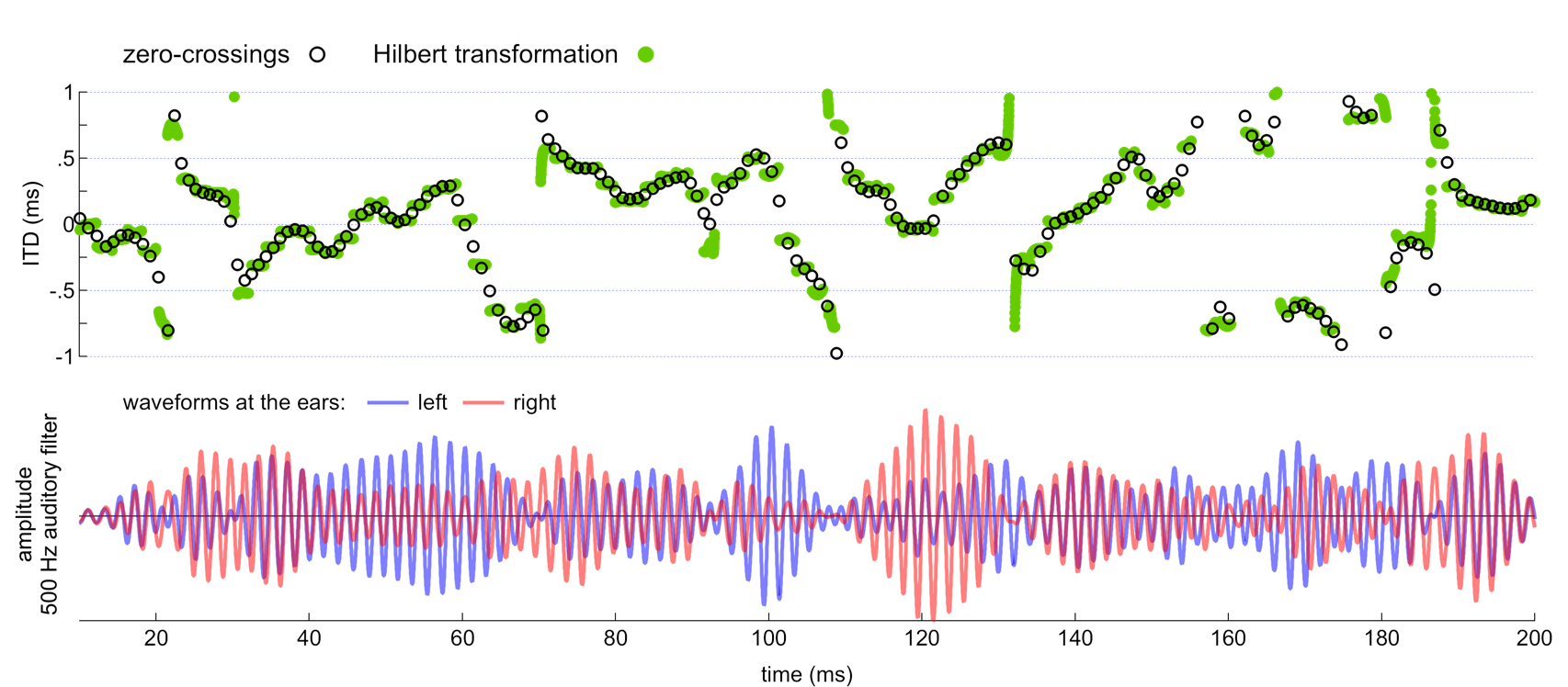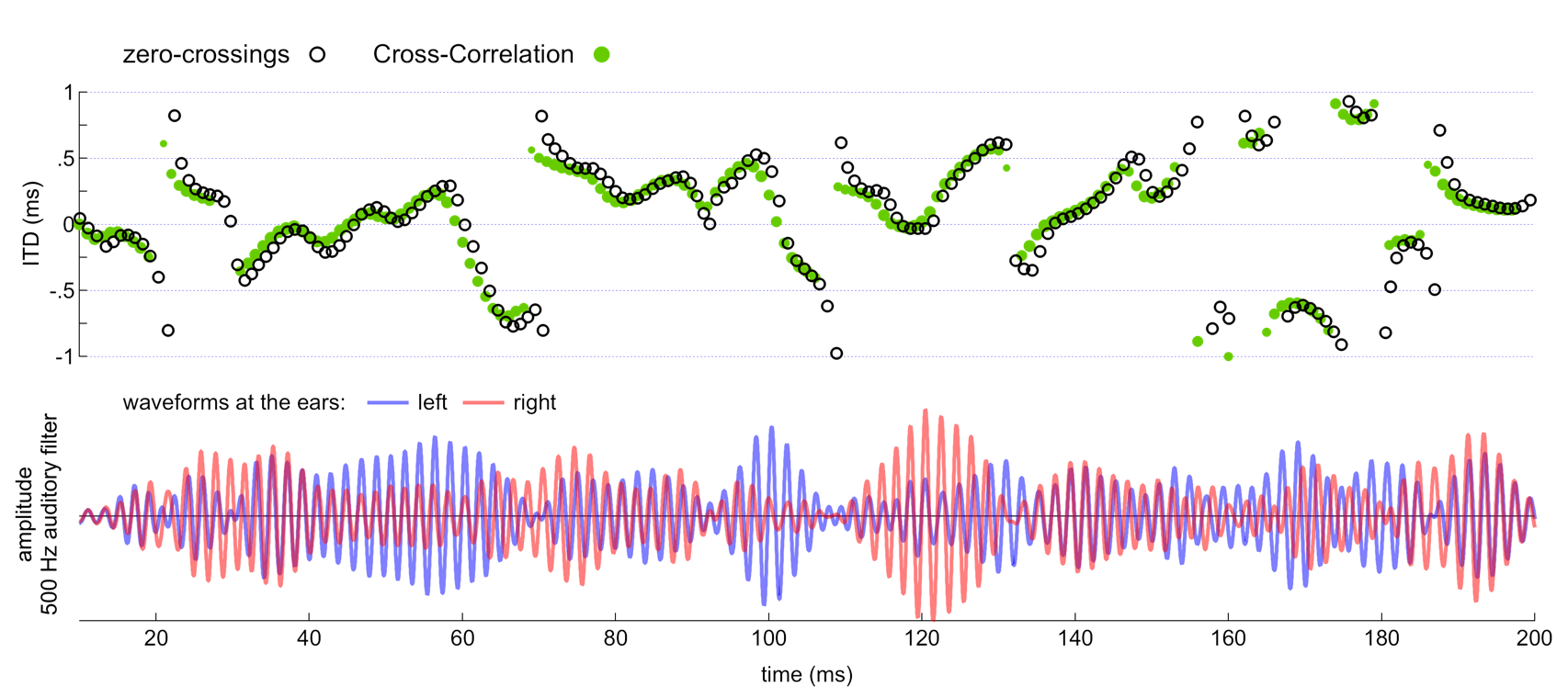Among several methods for measuring or inferring interaural phase or time differences (IPD or ITD), zero-crossings are biologically tenable and computationally efficient when compared to the Hilbert transformation or running cross-correlation (both based on the Fourier transformation).
Animation showing how interaural phase and time differences (IPD and ITD) may be computed from zero-crossings.
Comparison of interaural time differences (ITD) obtained using zero-crossings and the Hilbert transformation.

Waveforms are partially independent binaural noises passed through a 500 Hz auditory filter (independence index = 0.3).
Zero-crossing (open circles) computed twice per cycle for rising and falling waveforms capture most of the variability revealed by the Hilbert transform (filled green circles).
The biggest issue with the Hilbert transformation is that it greatly over-samples ITD and subsequent computations required to model spatial hearing become exceedingly inefficient. Results may be downsampled (e.g., down from 48,000 Hz in the above example) but one might as well use zero-crossings to begin with.
Comparison of interaural time differences (ITD) obtained using zero-crossings and running cross-correlations.

Running cross-correlation obtained using an overlapped 4-ms time-frame (2/500 Hz), resulting in an arbitrary temporal resolution of 1 ms. Markers (filled green circles) show lag times at correlation maxima. Larger markers indicate when the left waveform is similar to the right.
Despite the prominence of cross-correlation/covariance in the field of spatial hearing, it is my view that such analyses should be avoided. This is especially true when considering spatial hearing in naturalistic situations where spatial cue variability is ubiquitous.